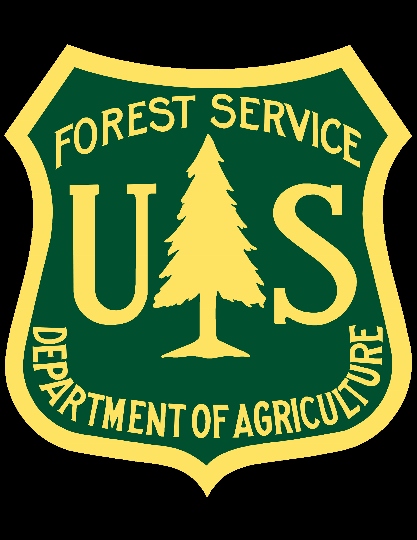The Forest Service operates and maintains 152 cabins on the Tongass National Forest. It’s now proposing closing of nine of them.
One cabin is in the Wrangell area. And it’s not quite like the other eight.
KSTK’s Shady Grove Oliver has the story.
Click here for iFriendly audio.
Binkley Slough is a recreational cabin on Farm Island in the Stikine River Delta, off the middle arm of the river.
Bob Lippert is the Developed Recreation Manager for the Wrangell Ranger District.
He says Binkley Slough is small and simple.
“It’s a hunter-style cabin. So it’s just basically a square cabin. It’s about 16 x 16 feet. It has an oil stove. It’s in a pretty neat island of huge spruce trees surrounded by the grass flats of the delta,” says Lippert.
And it’s one of nine cabins on the Tongass slated for closure as outlined in an environmental assessment document released by the Forest Service in November.
The EAS also proposes converting three additional cabins to three-sided shelters.
The Forest Service says it’s no longer able to cover all of the costs of operating and maintaining each of its cabins. Last year, those costs were around $1.8 million dollars.
Hans von Rekowski is the Recreation Staff Officer for the Tongass National Forest.
He says the recreational facilities budget has been slashed nearly in half in the last five years and the cabin fees that visitors pay don’t make up the difference.
He says closing or converting a few cabins that cost more than they make is the only way to recoup some of the losses. Those cabins were chosen based on a number of criteria.
“In the last couple of years, we’ve identified 12 cabins that the deferred maintenance is so high that we can’t repair them. For the most part, these 12 cabins are falling apart. A tree fell on one of them. There’s a couple on the Sitka district that haven’t been rented for 25 years. And we just decided that it’s time to get rid of those cabins,” says von Rekowski.
Low use and difficulty of access—that you have to rent a plane or helicopter and fly to the cabins for example—are also criteria.
The EAS estimates the typical end-of-season maintenance costs for one of these fly-in cabins at somewhere between $6,000 and $15,000 dollars.
But Binkley Slough is a different story altogether.
Along with only costing only about $500 to $700 dollars every other year to maintain, it can be reached by boating or hiking, and well, the list goes on.
“Well, we were directed—every district was directed to close a cabin. So I guess we didn’t really have much choice. This cabin has no deferred maintenance needs; it’s in perfectly good shape. There’s really no issues with the cabin at all other than it had low use,” says Lippert.
So, Binkley Slough ended up on the cut list because of its low use.
Hans von Rekowski says it’s also a logical choice because there are other cabins on the Stikine river delta, so its closure doesn’t shut people out of that entire use area. They have other options.
But, if closing Binkley Slough only saves about $300 a year rather than the $6000 to $15,000 estimate, is it worth closing?
Von Rekowski says the decision to close one cabin per district will keep the cuts distributed fairly—and the Forest Service had to start cutting somewhere.
“It’s just a decision that was made at the leadership level. I can’t say why. We just didn’t want…there’s good reasons to remove that cabin and we figured. If it’s only $1000 per year, that’s still $1,000 that could be used on another cabin,” says von Rekowski.
But, Lippert says, the issue is about more than just Binkley Slough. It’s about the public’s relationship with the Forest Service and its role in managing public space.
“Well, just my personal opinion is that it is important to have a cabin that maybe only gets used twice per year because that’s an experience for people. That could be their once in a lifetime Alaskan experience—to go to a fly-in cabin and just know that nobody else was there for a year or two years possibly. They’re there for people to experience the public’s land and I don’t think the intent was for them to be motel-style where there’s constantly people in and out every day,” says Lippert.
And the public can definitely expect to see more cabin closures in the years to come.
Lippert says he’s trying to get local organizations and individuals to volunteer time maintaining the cabins to cut costs and show local interest and ownership.
“You know, to defray as much cost as I can for our program and just to show that the people of Wrangell—the Wrangell area and Petersburg area care about these and want to see them stay,” says Lippert.
Hans von Rekowski says adopting the Binkley Slough cabin is an option.
“If somebody wants to adopt a cabin the District Ranger has the authority and the option to say okay, you guys take care of it. If you maintain it and keep it in good condition, we’ll keep it on the system,” says von Rekowski.
If it’s not adopted in time, Bob Lippert says he’ll try to push for selling the structure and moving it off Forest Service land.
If that’s not possible, the plastics and metals will be removed from the cabin and the wooden structure will be burned.
The Forest Service is taking comments on the proposed closures through January 2nd.
You can email comments to: comments-alaska-tongass@fs.fed.us or for more information, contact the Wrangell Ranger District at 874-2323.
You can read the entire Environmental Assessment document by clicking here.











